In this online exclusive for HAPPI Magazine, I reviewed how the USDA Biobased certification has been used in home and personal care. I found that consumers want sustainable and plant-based products, but only a few ingredient suppliers and brands have obtained the USDA Biobased certification for their ingredients and formulations. By adopting this standard, the cosmetic and personal care industry would gain significant credibility with customers and consumers for their sustainability programs.
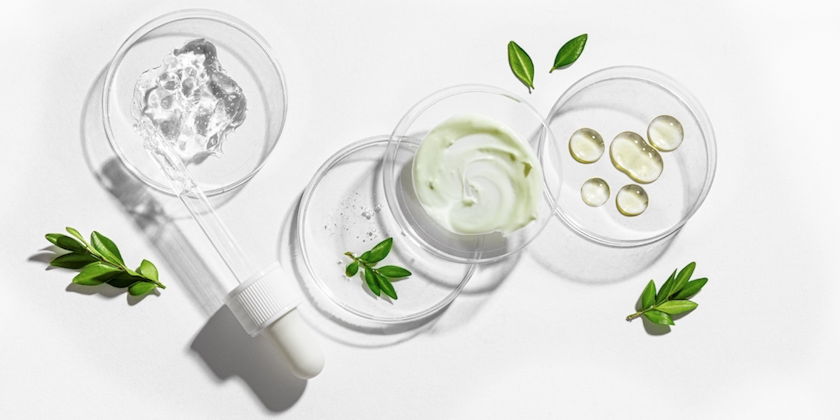
Abstract: Consumers prefer sustainable and plant-based cosmetic and personal care products. The USDA Biobased certification relies on independent lab testing for plant-based carbon, making it the most rigorous natural standard. However, only a few brands and suppliers support the standard.
Consumers want more sustainable products
Consumers prefer sustainable products. A 2023 McKinsey study found that brands making sustainability claims had significantly higher sales growth over the preceding 5 years than other brands (1). This depended on the market segment and brand size, with smaller brands growing faster. Especially more unique sustainability claims had a larger effect.
Products made from renewable materials have advantages over those made from non-renewable feedstocks, such as petroleum and natural gas. They can be more biodegradable and less polluting upon disposal, often have a lower carbon footprint, and are perceived to contain fewer harmful ingredients such as volatile hydrocarbons or microplastics. For consumers, these are important considerations when choosing a product to purchase.
However, it is near impossible for consumers to figure out which products are more sustainable than others. It is unclear if many green and eco-friendly product claims are supported by data. In any case, consumers are not well positioned to judge which claims they can trust. Product certifications offered by industry organizations aim to fill that gap. A sustainability claim may be more believable if it is backed by an independent industry or nonprofit entity.
There are many certifications addressing sustainability (2). The most widespread are the COSMOS and ISO 16128 certifications (3), which are based on the chemical identity of product ingredients. They offer a rulebook that outlines which ingredient chemistries are allowed and which are not. In some cases the rules may appear arbitrary, for example the COSMOS standard does not allow ethoxylation, even if the process uses bioethanol derived from biomass.
There is a governmental certification for sustainability: the US Department of Agriculture certifies both end products and ingredients as part of its BioPreferred program. The goal of this program is to increase the purchase and use of biobased products, which are products made from plants and other renewable feedstocks (4). This is projected to reduce reliance on petroleum and increase use of renewable agricultural resources.
The USDA Biobased certification
The BioPreferred program certifies both end products and intermediates (i.e. ingredients) in a variety of industries, from engine oil to office supplies and home and personal care products. It was established as part of the 2002 Farm Bill and expanded in 2008 with the Federal Procurement Preference Program, which requires federal agencies to prefer biobased products, and the Voluntary Product Certification and Labeling Program. As part of that last program, the USDA launched its Certified Biobased Product label.
Companies can apply to have their products certified by testing the biobased content of their products through third party lab testing. This test costs about $495 per sample and takes about 3 weeks. The lab test follows ASTM Standard D6866 (5) to distinguish biomass-based carbon from carbon that comes from fossil fuels. It measures the amount of the carbon-14 isotope, which is present in biomass but not in fossil fuel carbon. This carbon isotope is continuously generated in the atmosphere by cosmic rays and makes its way into biomass through photosynthesis. However, its half life is about 5,730 years, so the amount in fossil fuel deposits is miniscule. The output of the lab test is the percentage of biobased carbon in the test material. The minimum percentage required for USDA Biobased certification varies by product type.(4) For lotions and moisturizers, the minimum biobased content is 59%, whereas for laundry products it is only 34%. Federal agencies are required to purchase products that meet these minimums.
Because it is based on independent lab testing, the biobased content certification is one of the most meaningful product certifications. It does not rely on an assessment of the product formula by a panel of experts, nor on a list of ingredient rules. While it is possible to be certified at a much lower biobased carbon percentage, many companies aim for the 100% biobased mark. In practice, the average biobased carbon percentage of products certified in the personal care and toiletries category is 86%.
What products are certified biobased
The average biobased content of certified products in the Personal Care and Toiletries category in the USDA database is rather low because only about one in six products is certified as having 100% biobased content (Figure 1). One of the challenges in achieving 100% biobased content in a product is that many common home and personal care ingredients are not 100% biobased. They contain a fraction of fossil carbon. Another challenge is that the biobased content of ingredients is often not readily available. Sometimes ingredient suppliers list the natural origin index (NOI) of materials, which is determined using the methods in the ISO 16128 standard (3). However, this is a calculated number based on the origins of the constituent ingredients and not a measured value. Therefore, a NOI of 1 does not guarantee that a material is 100% biobased.
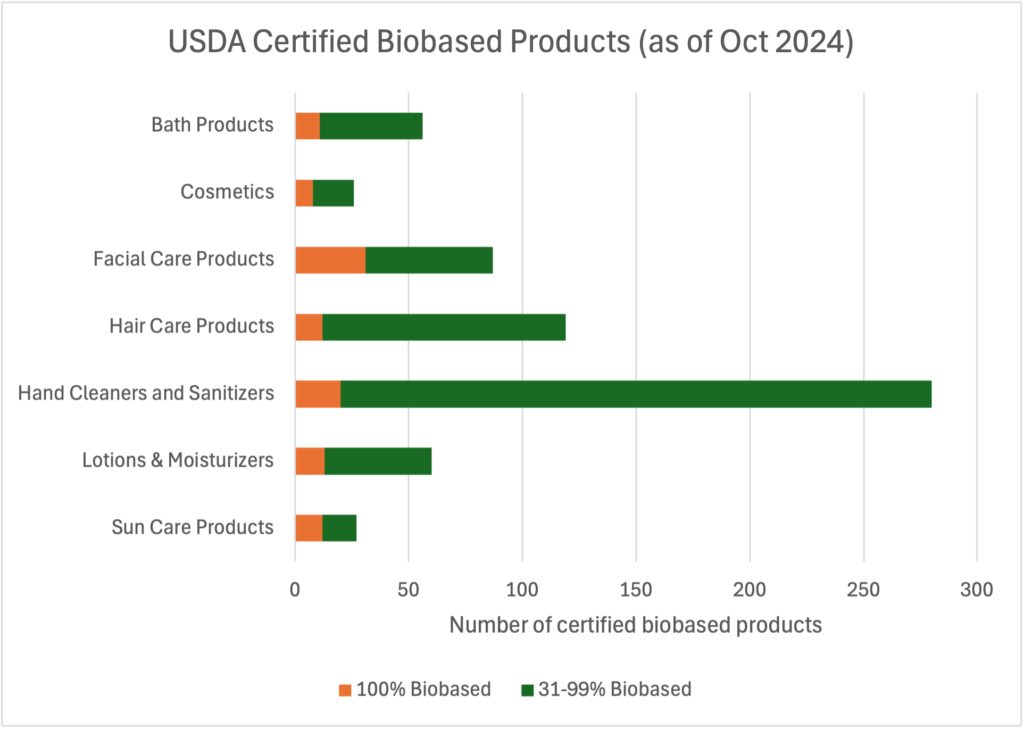
Figure 1. USDA Certified Biobased products by subcategory in Personal Items and Toiletries category (data as of October 31, 2024)
As noted above, the USDA BioPreferred program certifies ingredients as well as finished products. There are over 1,000 ingredients certified with an average biobased carbon content of 91%. In the Personal Items & Toiletries category, almost 700 formulated products are certified, with an average biobased carbon content of 86%. About one sixth of those are certified at 100%. However, the split over product categories is not even, with most certified products in the Hand Cleaners and Sanitizers category (Figure 1). This is most likely an outcome of the high hand sanitizer demand during the COVID-19 pandemic.
Most personal and home care finished product manufacturers have not obtained the biobased certification. In personal care, only a few larger brands offer certified biobased products (Figure 2). Missing on the list are the largest cosmetics and personal care brands, like L’Oréal, Unilever, Procter & Gamble, and Estee Lauder. The only larger brand offering certified biobased products is The Honest Company, which has a mission statement that emphasizes ingredient safety and sustainability. Even then, only a fraction of Honest’s certified products is 100% biobased.
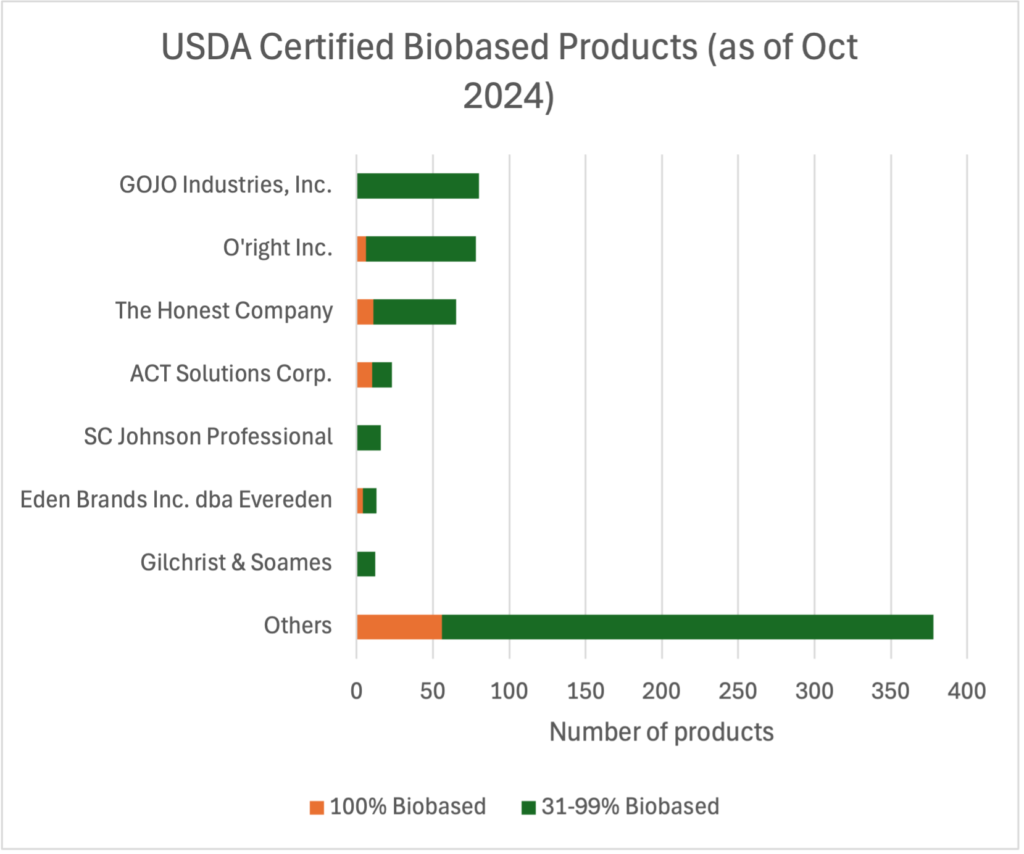
Figure 2. USDA Certified Biobased products by manufacturer in Personal Items and Toiletries category (data as of October 31, 2024)
In home care, the biobased certification is more accepted. Scott Jaynes, Research and Technology Manager at Croda, says that home care brands with a sustainability focus are pursuing the certification. This is especially true if they want to sell to the federal government, because the BioPreferred program mandates a minimum biobased content. Overall, interest from home care consumers is increasing. Still, only a small number of suppliers and brands offer certified biobased products and ingredients.
Major ingredient suppliers such as BASF and Shell have chosen to use the mass balance approach to biobased content. This approach accounts for biobased and fossil carbon in the supply chain by careful accounting. It is much less complex to implement than to segregate biobased materials, because these are often blended with synthetic ingredients. However, because the biobased percentage is based on accounting and not chemical analysis, the actual biobased percentage in mass balanced products can vary. Without further analysis, a mass balanced ingredient cannot be certified biobased. According to Donna Petretti, Head of NA Marketing – Consumer Care at Croda, the biobased certification resonates more with consumers of home care products than personal care products. Personal care consumers prefer the “% natural” over the “% biobased” wording, so the outcomes of the ISO 16128 and COSMOS standards are more easily communicated compared to the USDA Biobased standard.
How to get to 100% biobased carbon
It is fair to say that the USDA Biobased certification has failed to penetrate the overall personal care market beyond a few smaller brands, even though it has existed for 16 years. The Biobased certification is arguably the most rigorous of “natural” certifications as it relies on third party analytical testing. This may also be one of the reasons it is not being adopted by major brands.
Achieving 100% biobased carbon content is difficult, because most cosmetic ingredients are not certified, so their biobased content is unknown. As the ingredient suppliers have often not done the required testing, formulating 100% biobased products becomes a costly guessing game, with repeated reformulations and retests if a product doesn’t pass the 100% biobased hurdle.
For a brand that positions itself as natural, a test result of less than 100% biobased is unacceptable because it means that the formulation is not entirely natural. It would have a measurable level of fossil fuel-derived content. Yet most USDA Certified Biobased products are not certified at 100% (Figure 1). Perhaps companies see value in being partially biobased, are not able to reformulate, or have not further developed the tested formulas.
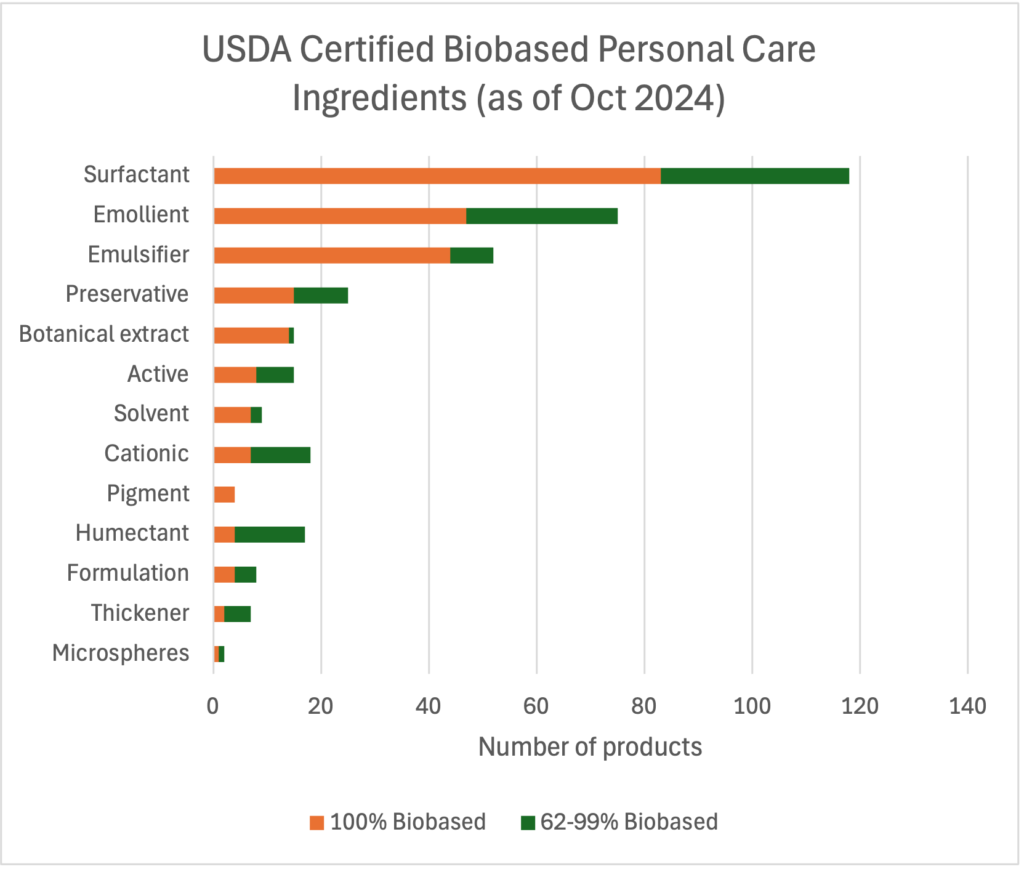
Figure 3. USDA Certified Biobased ingredients by function in the Personal Care Product category (data as of October 31, 2024)
Designing a 100% biobased formula can be done by selecting only plant-based ingredients and insisting that each supplier provides the biobased percentage. Some ingredients are certified biobased and there are biobased ingredients available in almost every ingredient category (Figure 3). However, many ingredient suppliers don’t provide the biobased percentage, including several major chemicals manufacturers (Figure 4). This means that reformulating and retesting is often necessary to get to 100%. The extra work increases formula development cost.
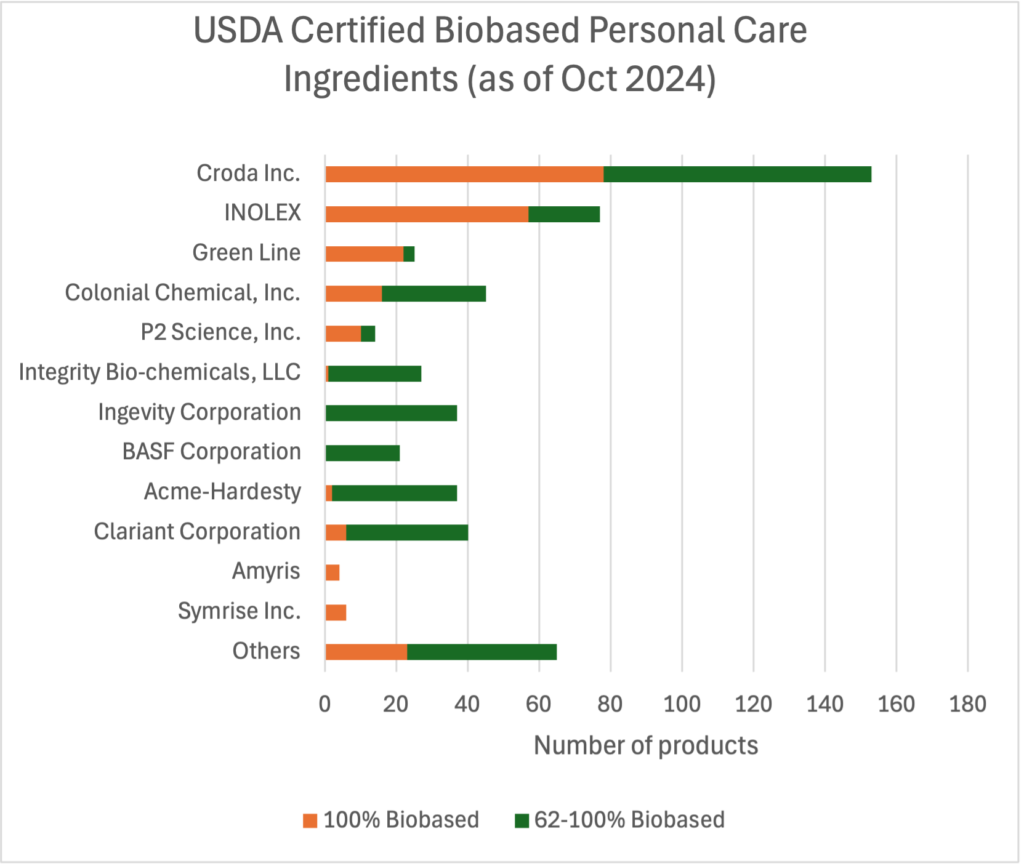
Figure 4. USDA Certified Biobased ingredients by supplier in the Personal Care Product category (data as of October 31, 2024)
Finally, it may not be possible to match the performance of a traditional formulation with biobased ingredients. In that case, companies need to make sure that the sustainability benefit of a biobased formulation trumps the performance deficit in the eyes of consumers.
Marketing 100% biobased
The concept of the carbon-14 test to measure the biobased percentage can be confusing. A 100% certified biobased product contains 100% non-fossil carbon, but non-carbon ingredients can still derive from fossil or mineral sources. For example, inorganic materials such as silica and water do not contribute to the biobased carbon percentage. Therefore, a 99% certified biobased product contains 99% biobased carbon, but depending on the weight fraction of other biobased elements in the product, the amount of biobased material in the overall product may be different. For example, if the composition of the other elements in the product (such as silicon or oxygen) contains less than 99% biobased material, the product will be less than 99% biobased.
Moreover, a 100% certified biobased product does not necessarily contain only 100% biobased ingredients. A few ingredients that are less than 100% biobased can be tolerated, because the carbon-14 test has an experimental uncertainty of about 3%.(5) For example, a 95% biobased ingredient in the formulation at 1% contributes only 0.05% non-biobased carbon to the product.
Considering the cost of certification, the performance disadvantages of biobased products, and the complex nature of the carbon-14 test, companies may have difficulty in pursuing and then communicating the value of the biobased certification to customers and consumers. This may be the reason why many brands have not pursued the certification. Brands need to educate their consumers about the value of the certification. For ingredient suppliers, this is easier because often their customers, makers of consumer products, have more technical knowledge.
There are only a few brands that try to explain the biobased certification to consumers. The Honest Company, which has certified 65 formulations, 11 of which at 100% biobased, stated in the blog on their website in 2020 that over half of all Honest products are USDA Certified Biobased.(6) California Baby says on its website that some of its products are 100% plant-based and USDA certified.(7) Taiwanese personal care brand O’right describes on its website that many of its products and cosmetic ingredients are USDA certified biobased, some at 100%.(8) O’right explains that biobased products are a “healthier, better alternative than petroleum-containing counterparts” and that they “play an important role in reducing greenhouse gas emissions that worsen climate change”.
For the USDA Biobased certification to be relevant to personal care consumers, it must be communicated effectively and persuasively. First, consumers should be made aware that the biobased test is more objective than the natural certifications that COSMOS and ISO offer, due to its requirement for third party analytical testing. Second, major brands need to support the biobased certification to give it visibility and credibility. If that is in place, the cosmetic and personal care industry will have made a major step toward a greener and more sustainable future.
Conclusion
Consumers desire sustainable and plant-based products, but only a few ingredient suppliers and brands have obtained the USDA Biobased certification for their ingredients and formulations. By adopting this standard, the cosmetic and personal care industry would gain significant credibility with customers and consumers for their sustainability programs .
I would like to thank Dr. Birnur Aral for expertly reviewing the manuscript.
References
- Sherry Frey, Jordan Bar Am, Vinit Doshi, Anandi Malik, Steve Noble, “Consumers care about sustainability—and back it up with their wallets”, McKinsey & Company/NielsenIQ, February 2023.
- Marc N.G. de Mul, “Second Nature: Sustainability as the Outgrowth of Naturals, A Commentary”, Cosmetics & Toiletries 2020, July issue, 26-37.
- The International Organization for Standardization, ISO 16128-1:2016 “Guidelines on technical definitions and criteria for natural and organic cosmetic ingredients and products – Part 1: Definitions for ingredients” (2016); and ISO 16128-2:2017 “Guidelines on technical definitions and criteria for natural and organic cosmetic ingredients and products – Part 2: Criteria for ingredients and products” (2017).
- United States Department of Agriculture, BioPreferred Program website, October 2024.
- American Society for Testing and Materials, ASTM D6866-22, “Standard Test Methods for Determining the Biobased Content of Solid, Liquid, and Gaseous Samples Using Radiocarbon Analysis” (2022)
- “Protect your mother (earth)”, The Honest Company, 2020.
- “100% plant-based skincare”, California Baby, 2024.
- “Natural Products”, O’right, 2024.
